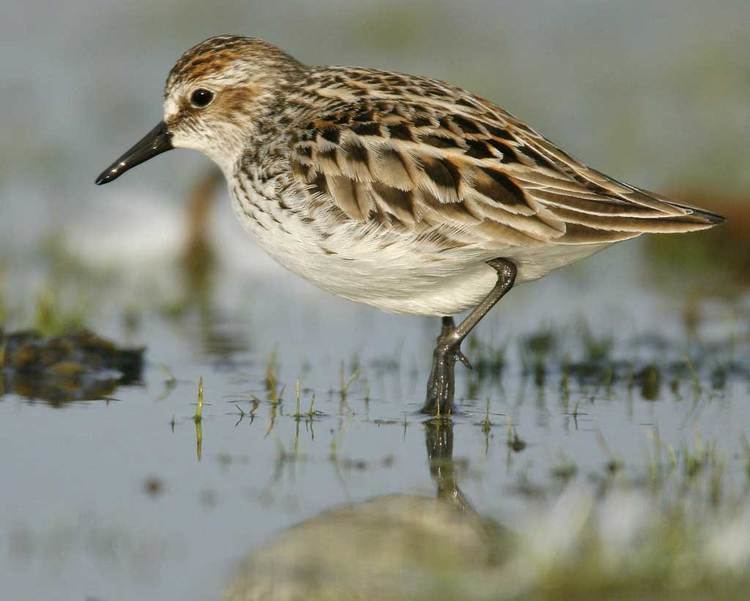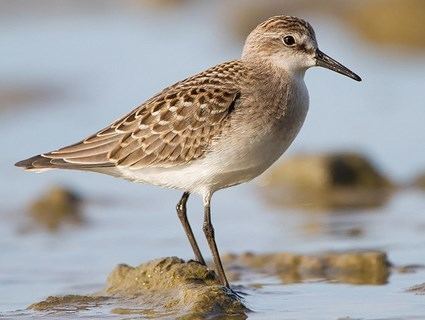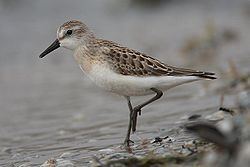Higher classification Calidrid | Phylum Chordata Family Scolopacidae Scientific name Calidris pusilla Rank Species | |
 | ||
Similar Sandpiper, Bird, Least sandpiper, Semipalmated plover, Western sandpiper | ||
Semipalmated sandpiper
The semipalmated sandpiper (Calidris pusilla) is a very small shorebird. The genus name is from Ancient Greek kalidris or skalidris, a term used by Aristotle for some grey-coloured waterside birds. The specific pusilla is Latin for "very small".
Contents
- Semipalmated sandpiper
- Semipalmated sandpiper on james bay ontario
- Description
- Breeding and habitat
- Status and migration
- References

It is sometimes separated with other "stints" in Erolia, but, although these apparently form a monophyletic group, the present species' old genus Ereunetes had been proposed before Erolia.

Semipalmated sandpiper on james bay ontario
Description

It is a small sandpiper, 13–15 cm (5.1-5.9 in) long and weighing around 20-32 g (0.7-1.1 oz). Adults have black legs and a short, stout, straight dark bill. The body is dark grey-brown on top and white underneath. The head and neck are tinged light grey-brown. This bird can be difficult to distinguish from other similar tiny shorebirds, in particular the western sandpiper; these are known collectively as "peeps" or "stints".
Breeding and habitat

Their breeding habitat is the southern tundra in Canada and Alaska near water. They nest on the ground. The male makes several shallow scrapes; the female chooses one and adds grass and other material to line the nest. The female lays 4 eggs; the male assists in incubation. After a few days, the female leaves the young with the male; the young feed themselves.
These birds forage on mudflats, picking up food by sight and feel (bill). They mainly eat aquatic insects and crustaceans.
Status and migration
They are long distance migrants and winter in coastal South America, with some going to the southern United States. They migrate in flocks which can number in the hundreds of thousands, particularly in favoured feeding locations such as the Bay of Fundy and Delaware Bay. This species is a rare but regular vagrant to western Europe.
Although very numerous, these birds are highly dependent on a few key stopover habitats during their migration, notably Mary's Point and Johnson's Mills along Shepody Bay, an arm of the Bay of Fundy. During the months of July and August, the Nature Conservancy of Canada runs an information center about these shorebirds in Johnson's Mills, New Brunswick.
